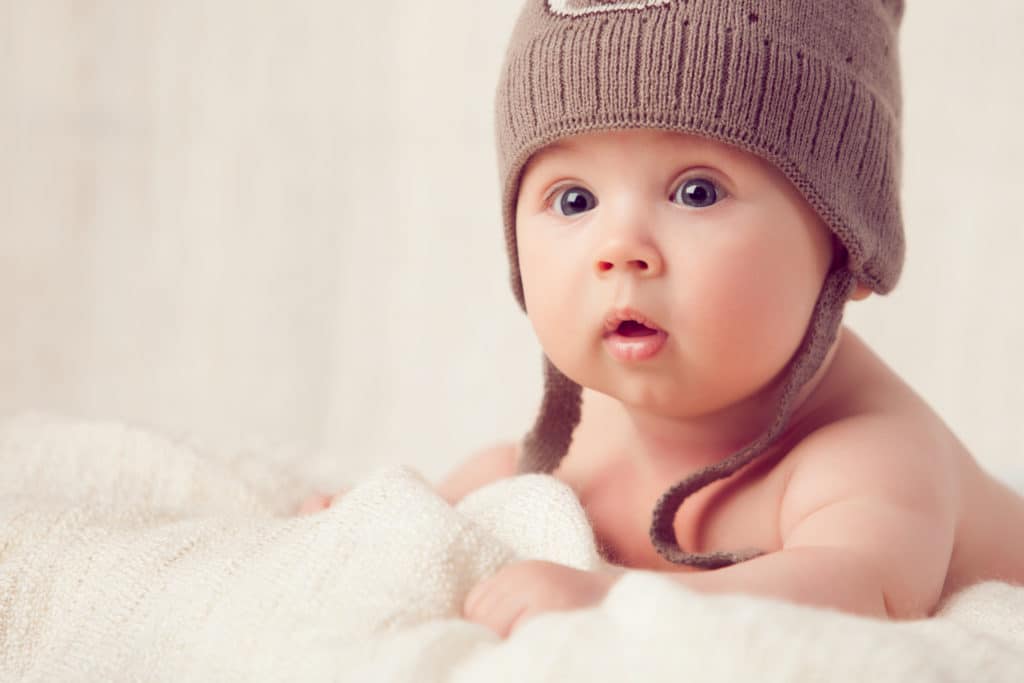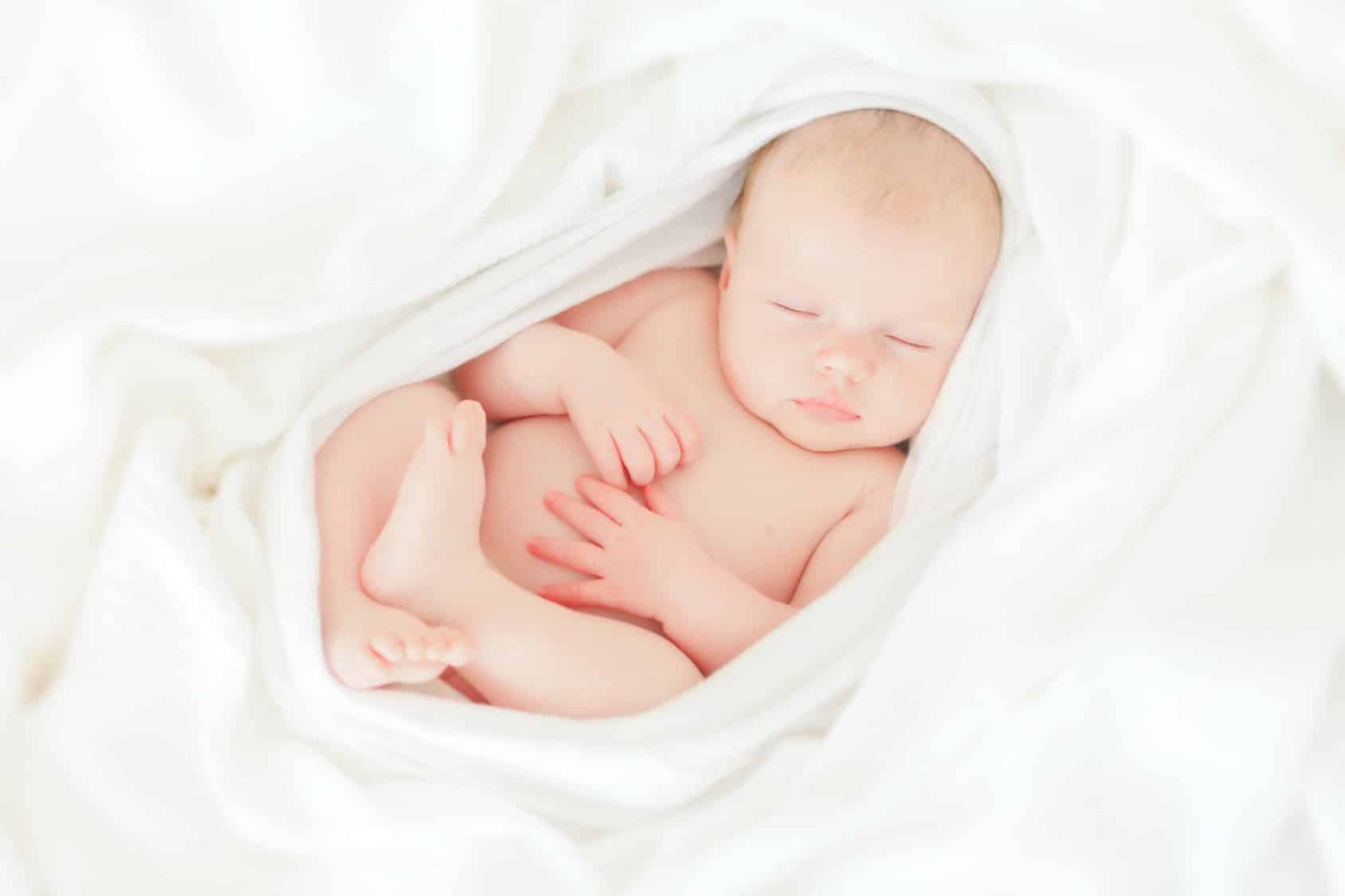All important baby sizes at a glance
If you want to buy clothes for a baby, whether for your own child or as a gift, you are inevitably faced with the task of getting the right size. You can easily find out which baby sizes you need to buy in our baby size charts (for baby clothes, baby socks and baby hats) read out.
In principle, of course, baby size tables only give general average values. Each child ends up growing at their own pace. Nevertheless, these tables are a good guide.
Tips on initial equipment for first-time parents and first-time donors
It is relatively difficult to estimate the height at which a baby will ultimately be born. Of course, there are also average values here. But no statistic will help you when shopping for clothes when it comes to estimating how long a newborn will wear the first size. It is best to buy the very small sizes in not too large quantities. The next dress size is usually reached quickly.
Baby clothing size table (0 – 36 months)

With the help of this table you can read out the baby sizes for baby clothes for the first 36 months. It covers the period from infant to toddler.
| Age from baby to toddler | height | clothing size |
|---|---|---|
| preemie | up to 38 cm | 38 |
| preemie | 38 to 44 cm | 44 |
| 0 to 1 months | 45 to 50 cm | 50 |
| 1 to 2 months | 51 to 56 cm | 56 |
| 2 to 3 months | 57 to 62 cm | 62 |
| 4 to 6 months | 63 to 68 cm | 68 |
| 7 to 9 months | 69 to 74 cm | 74 |
| 10 to 12 months | 75 to 80 cm | 80 |
| 13 to 18 months | 81 to 86 cm | 86 |
| 18 to 24 months | 87-92cm | 92 |
| 24 to 36 months | 93 to 98 cm | 98 |
Clothing sizes can vary depending on the manufacturer
Much like buying clothes for adults, it is unfortunately also when it comes to babies and children. The clothing sizes are different for the manufacturers and for various brands and chains. Experience currently shows that baby clothes from H&M are apparently a bit more generous. At C&A, on the other hand, the sizes seem to match, tending to be a little smaller than expected. Baby clothes from Ernstings Family, on the other hand, should be larger or smaller depending on the type of clothing and according to various parent forums. Still, finding the right baby size isn’t a gamble, it’s more a mix of official size charts and a little experience.
Which baby sizes fit right after birth?
In most cases, the initial equipment for babies is based on size 56. This is the size that is the right size for a newborn on average. It can be roughly assumed that most newborns will be at least 51 cm tall and weigh just under 3,000 grams.
In the last few weeks of pregnancy, midwives and doctors can estimate and calculate the size of your baby when it is born. However, deviations are still absolutely the rule here. If you estimate the final birth size to be around a limit of two dress sizes, the decision to buy a dress is of course not that easy. In principle, however, we advise you not to buy too many pieces of the smaller size, because your baby will quickly outgrow this size in any case.
Size 44 is available for premature babies. Extremely premature babies can go down to size 38 so that even the very youngest are well cared for.
How do I find the right baby sizes?
The manufacturers of baby clothes are based on body size. Even with the smallest size 38 (for extremely premature babies) a height of “up to 38 cm” is given. And so it goes on in principle. For example, the size 62 is intended for a body height of 57 cm to 62 cm. They are (so to speak) “up to sizes”.
As briefly described above, the baby sizes vary slightly depending on the manufacturer. In addition, in real life, size is not the only thing that matters. Body weight also plays a role. If a rather petite baby still fits well into the 50s, it may be that baby 2 with the same height has healthy baby cheeks. Depending on how the onesie turns out, according to the baby size chart, size 56 must be used.
Saving tips for buying baby clothes
Never again in life will a baby grow and develop as quickly as in the first 24 months. You blink twice thoughtlessly, and you already have the feeling that the little darling has already grown again.
- Many parents are starting to buy rompers without a foot part. If necessary, you can pull the size you are using a little further with the help of socks and tights. At least as long as it doesn’t pinch between your legs, your neck or your arms because it’s getting too small there.
- Even during pregnancy, you always discover great baby clothing that you can hardly ignore, even if the list of basic items has long been completed three times over. Since it’s so nice sometimes to just grab it anyway, you could just skip a few sizes when buying. At some point it will definitely be needed. Too many baby clothes in the same size can quickly lead to pieces that were only worn once or twice before the next size was due. That would be a pity.
- On the way to changing to the next clothing size, the seasons come to mind – and the temperatures to be expected. So you should always keep an eye on whether a pack of ten lined tights (in the current size) makes sense or still makes sense if a long-term temperature change is in sight.
Size chart baby socks and baby shoes

With the help of this table you can easily read out the right sock size and shoe size for your baby. When it comes to baby socks, you should always follow the manufacturer’s instructions. In some cases there are baby socks that are officially designed for three consecutive shoe sizes.
| baby age | foot length | shoe size |
|---|---|---|
| 0 to 3 months | 10 centimeters | 16 |
| 3 to 6 months | 10.5 cm | 17 |
| 6 to 9 months | 11 cm | 18 |
| 9 to 12 months | 11.5cm | 19 |
| 12 to 15 months | 12.5 cm | 20 |
| 15 to 18 months | 13 cm | 21 |
| 18 to 21 months | 13.5 cm | 22 |
| 21 to 24 months | 14 cm | 23 |
Can babies wear shoes?
In fact, babies don’t need shoes. As long as they can’t walk yet, baby shoes are at best a design accessory. They may look fancy and cute, but they serve no purpose.
In addition, paediatricians and midwives strongly advise against using baby shoes. They even warn against putting tighter or rigid shoes on babies. Because the small baby bones are still very soft and in constant (lightning fast) growth. If the shoes are too tight, the bones can deform. In the worst case, this can lead to permanent malpositions on the feet.
Your little treasures are barefoot, well taken care of in socks or tights. When they become more mobile and start crawling, or even dare to take their first steps, you can buy very light and soft leather shoes (often also called leather slippers). These baby shoes are also ideal for outdoors, as they are breathable but waterproof.
Only when your children can already walk completely freely and without support should you think about the first real shoes. Please do not buy walking shoes for your babies before this time.
READING TIP: What else you need to consider when buying shoes and many other valuable tips on the subject can be found in this detailed guide to baby shoes and children’s shoes.
Size table baby hats by head circumference

You can use this table to match your baby’s head circumference to the appropriate size for baby hats. As you can see, the head circumference corresponds to the hat size.
| baby age | Head circumference corresponds to size |
|---|---|
| preemie | 33 to 35 cm |
| 0 to 2 months | 35 to 37 cm |
| 3 to 4 months | 37 to 39 cm |
| 4 to 5 months | 39 to 41 cm |
| 5 to 6 months | 41 to 43 cm |
| 6 to 9 months | 43 to 45 cm |
| 9 to 12 months | 45 to 47 cm |
| 12 to 18 months | 47 to 49 cm |
| 18 to 24 months | 49 to 51 cm |
Tips for buying baby hats
Manufacturers of baby hats are also based on head circumference. The sizes of the respective hats, just like in our table, are given with the centimeter circumference “FROM” to “TO”. A baby hat therefore always fits up to a head circumference of the second value.
- Since the head circumference of babies sometimes develops completely differently, parents have to measure carefully with the measuring tape before buying a hat in order to get the correct hat size.
- Baby hats are not just a really chic piece of clothing. They serve an important purpose. Small babies are not yet able to regulate their body temperature on their own. The hats are important protection against the cold in autumn and winter, or protection against too much sun and heat on the head in summer.
What if the baby size charts don’t fit?
Any baby size chart can be a good guide to finding the right dress size, shoe size, or hat size. Nevertheless, it must be said that all babies grow completely individually. You can roughly estimate when a baby will shoot up, but you can never pinpoint it.
If your baby is smaller or larger in some places, you shouldn’t let that make you nervous. It is correct that, according to the U booklet, for example, the head circumference should have certain standard values. If there are any potential abnormalities there or elsewhere, your pediatrician will actively point them out to you. However, these baby size charts have no relevance to the development of your children. They are purely ready-made tables for consumers.
Visit the rest of the site for more useful and informative articles!




